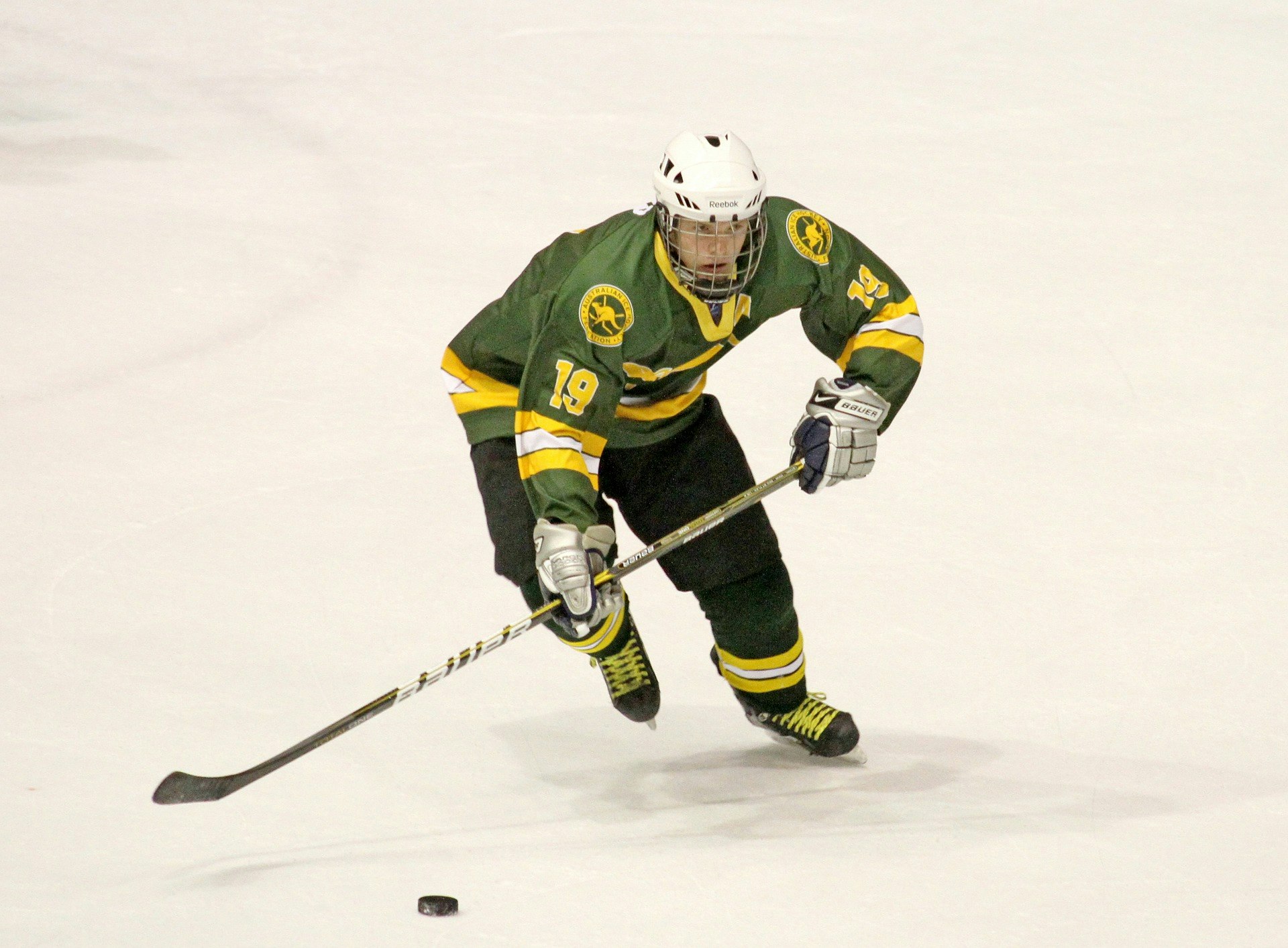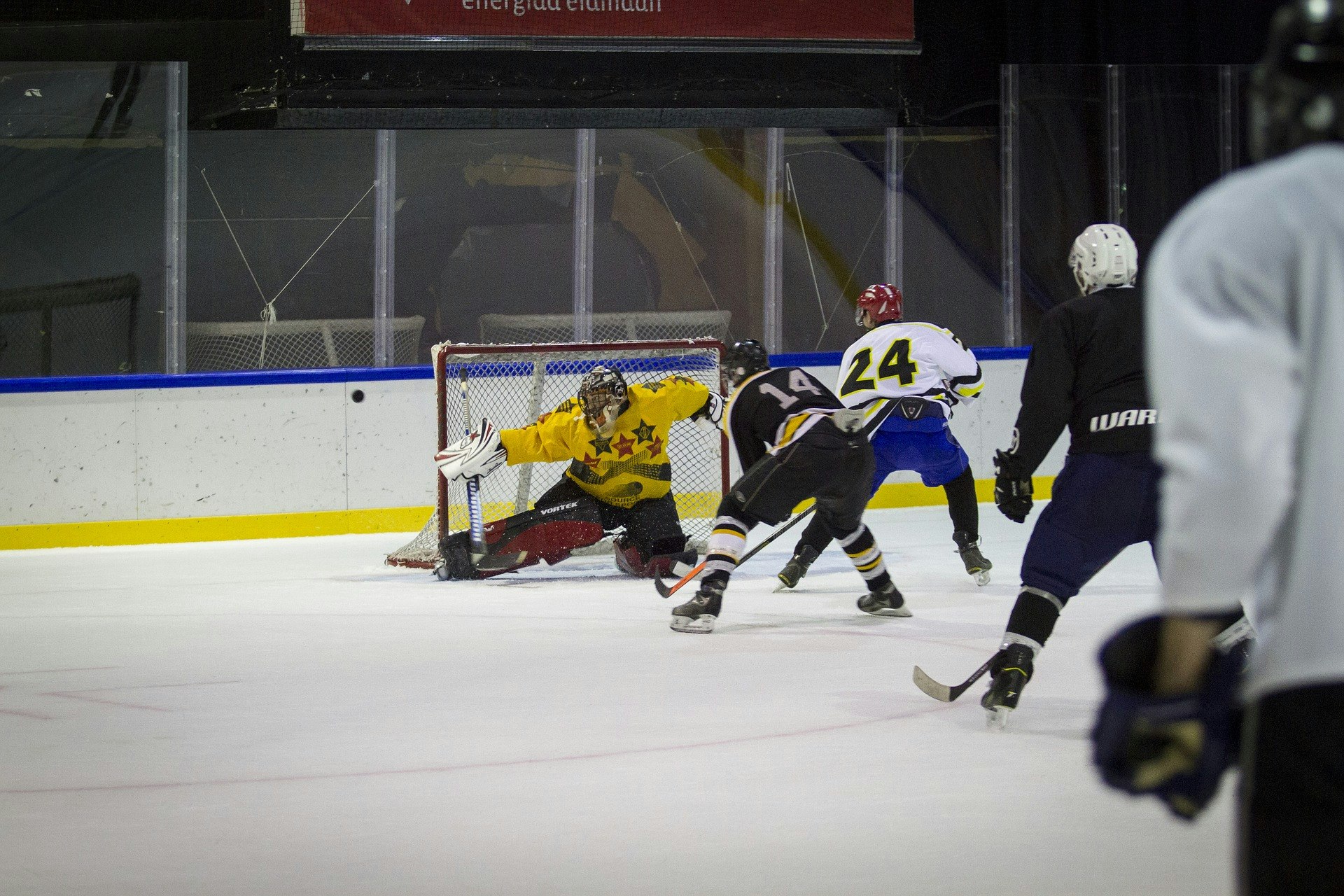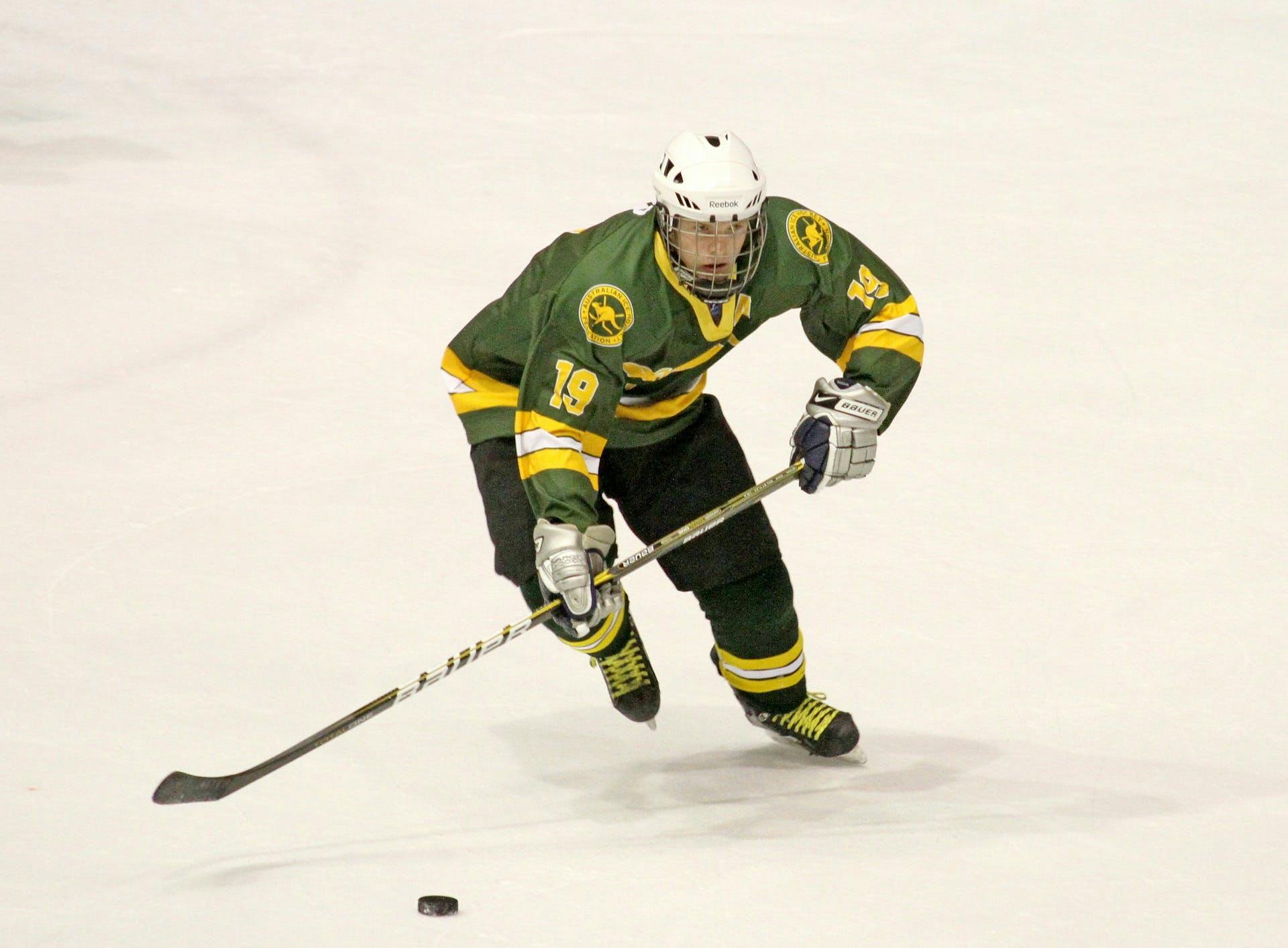Are you looking to up your hockey game? For this article, we have 5 tips that can benefit players of all skill levels. But, less-skilled players will be able to benefit more. The higher your skill level, the more effort you’ll have to put in to see the same amount of gains.
The training tops we have for you today cover all aspects of the game. If you want to get better, these are the 5 areas in which you should be practicing.
- Skating Stance & Rhythm
- Puck Possession & Passing
- Shooting on Goal
- Positioning on the Ice
- Communicating with Your Teammates
Practicing these basics can raise anyone’s game. It doesn’t matter if you’re an amateur or a former pro.
1. Practice Your Skating

You may be thinking to yourself, “I already know how to skate!” That’s great. But, everyone can improve their skating ability — even pros. Learning to skate is a lifelong project.
Work on Your Stance
Your stance is an important part of skating. And, while this part of the tip is more geared toward beginners, everyone should keep it in mind. A good hockey squat gets your center of balance nice and low, which leads to a few benefits.
Make sure your center of gravity isn’t too far forward or backward to make the most of your squat. This will help to keep you sturdy on the ice. The more balanced you are, the faster you’ll be able to skate. You’ll also gain confidence, allowing you to push harder.
Additionally, a low stance will give your stride more power. When your legs have farther to extend, the power they’re able to generate more power from each stride. And more power leads to more speed.
Work on Your Rhythm
Improving the rhythm of your stride is something that can help players of all skill levels. Having a good stride rhythm will also increase your speed. Extending your legs all the way with each stride is important.
If you have poor rhythm, your movements may seem quick and jerky. These types of movements won’t generate much power or speed. It’s also easier to injure yourself by pulling a muscle if your form isn’t correct.
2. Possession and Passing
Speed, agility, stickhandling, and awareness are all combined together into puck possession. All four of these skills are important for protecting the puck from opposing players.
Speed and agility connect to your skating ability (see tip #1). You can perform stickhandling drills both on and off the ice, including at home. And to improve your situational awareness, practice tracking player and puck positions.
Now that you know how to get better at holding onto the puck, it’s also important to know when to pass it. Nobody likes a puck hog. But also, passing is often the optimal play. Look at how common passing is in the NHL.
The puck can move much faster than any player on the ice. Because of this, you should always be on the lookout for open teammates to pass to. Learn to recognize when you’re outmatched by opposing players and need to pass.
Puck possession and passing are two sides of the same coin. Both help you to move the puck into the opponents’ zone, but in different ways.
3. Shoot Your Shot

You could argue that shooting is the most important part of hockey. It’s the only way to score points. And without points, you can’t win. Sure, winning isn’t everything. But it’s a lot better than losing!
Every shot on goal counts. As Wayne Gretzky said, “You miss 100% of the shots you don’t take.” And even if the goaltender blocks your shot, your team may be able to capitalize on the rebound.
Of course, this isn’t an excuse to hog the puck. If you see a teammate who’s open and in a better position to take a shot, pass to them. But, if you notice that you’re never taking shots on goal, start!
As we’ve already covered, passing is an important part of the game. But, shooting is too. If you’re afraid to shoot the puck, that will only put more pressure on your teammates. Practice shooting outside of game scenarios to begin building your confidence.
4. Position Yourself Effectively
Positioning on the ice is important for both offense and defense. For offense, you want to be open for passes from your teammates. And for defense, you want to cover as much of your team’s zone as possible in an efficient manner.
Starting with offense, your primary goal is to move the puck up the ice so that you can shoot on the opposing goal. Both moving the puck toward the goal and shooting on the goal rely on player positioning. You and your teammates need to spread out to make the most of passing opportunities.
When on defense, your goal is to stop the opposing team from gaining superior positioning. One of the best ways to do this is by having the defenders spaced out throughout your zone. The more space your team can take up, the less space is available to your opponents.
5. Communication is King

Communicating with your teammates is one of the easiest ways to improve your game. Look out for and listen for teammates who are open for a pass. Let your teammates know that you’re open for a pass. And coordinate with your teammates so you don’t all rotate off the ice at the same time. Doing so could hand momentum to your opponents.
It’s also important to communicate off the ice, as well. Get to know your teammates! Hang out and talk before and after games. Getting to know your teammates will help you communicate better with them on the ice. And, you’ll have more fun too.
Shinny USA Hockey
Practicing your hockey skills on your own is good. But do you know what’s even better? Honing your skills by playing actual games with other people.
If you’re looking to play the game you love with like-minded people, sign up for Shinny USA today. Sessions take place most mornings at a variety of rink locations.
